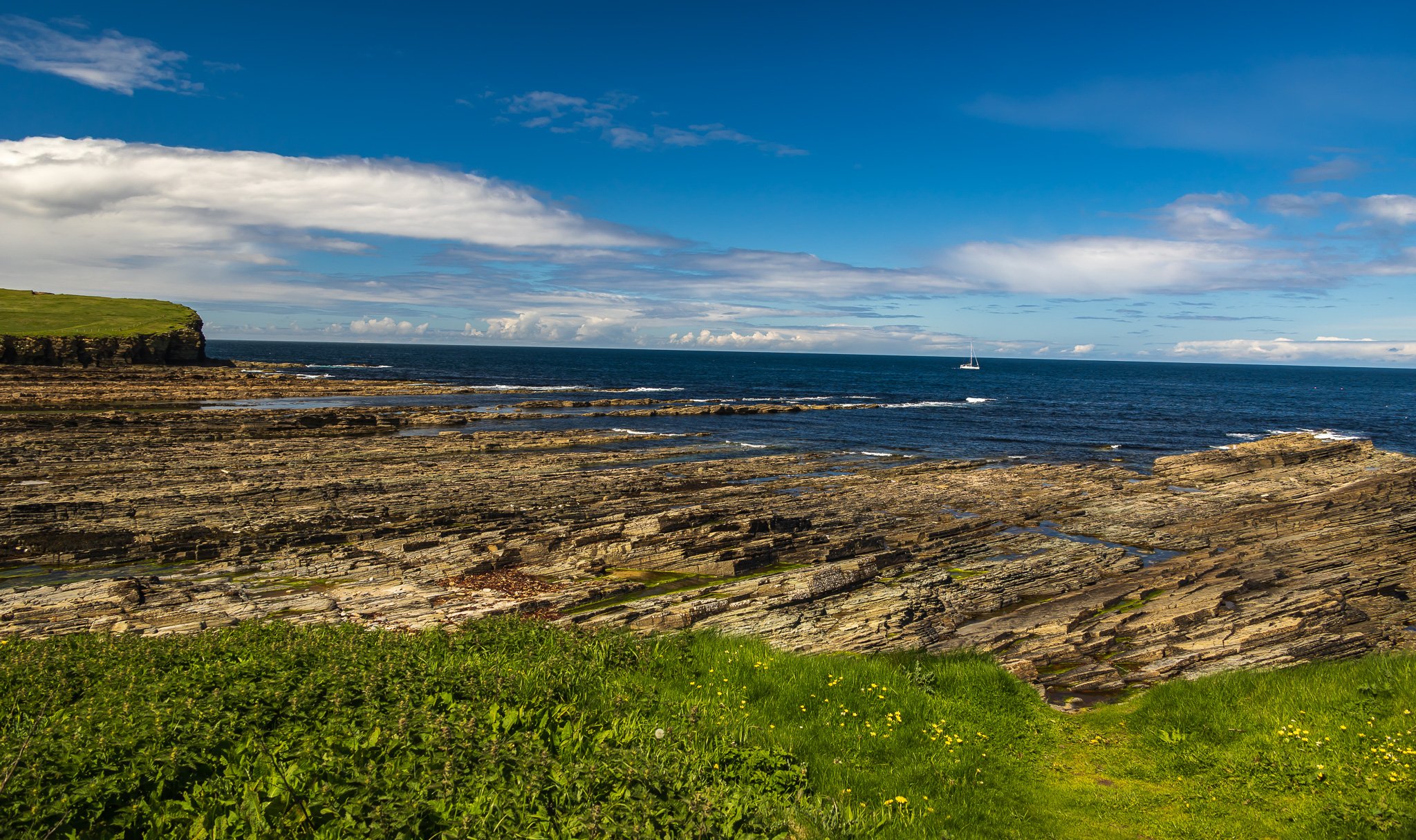After arriving in John O’Groats at northeast Scotland's last bit of land, Karl did a u-turn on his bicycle and started cycling west across the highlands.
I kept going east to Orkney.
Accessible by plane or boat, I chose the ferry passage at Scrabster, a port west of John O’Groats, as this crossing could accommodate my rental car. The journey takes 90 minutes, and if you get lucky as I did, with clear weather and calm waters, the views are spectacular.
The ferry passes the Isle of Hoy, offering a photo opportunity of the “Old Man of Hoy,” a 449-foot sandstone sea stack rising from the Atlantic Ocean. Then, the port of Stromness on the Mainland is reached, and it’s time to disembark.
Orkney is not 1, but over 70 islands and islets, only 20 are inhabited now, but they’ve been occupied for a long time.
The Vikings arrived in Orkney over 8000 years ago during the Neolithic (new stone age period) and settled in the region as farmers. Over the years, they built various stone ritual monuments considered one of the world's most significant and well-preserved Neolithic areas and consequently identified as UNESCO world heritage sites.
Everything I love when travelling is here in Orkney: history, stunning scenery with acres of green agricultural fields –– thanks to those Viking farmers –– and ocean views punctuated with hundreds of sheep and Highland “Coos”. Every place I ventured to in Orkney seemed to have all these sights in one vista, offering plenty of photo opportunities.
The following provides a mini photo collage of my top five highlights from Orkney:
Standing Stones of Stenness - this henge (circle of stones) is the oldest in Britain, older than Stonehenge. Only 4 of the original 12 stones remain, but some are over 6 metres tall.
Skara Brae is considered the best preserved, underground stone age village. You can see the walls, hallways, and stone beds (typically topped with straw) used during the neolithic times.
Ring of Brodgar is a stone circle 130 metres in diameter with 36 standing stones remaining when there were likely over 60 when it was built 4000 years ago for ceremonies and rituals. This ring is four times bigger than the nearby stones of Stenness and the third largest stone circle in Britain.
Brough of Birsay is a tidal island, and for about two hours a day, there is access to the small area with remains of Pictish and Norse settlements. The concrete causeway is only visible in low tide, and my wet shoes are a testament that the tide returns fast.
Earl’s Palace there are ruins here of the half-brother of Mary Queen of Scotts, who was Earl of Orkney in the 1500s.
I was sidetracked in Orkney for four days and can confidently say that Karl missed out. The photo collages highlighting my favourite spots in Orkney will ensure you venture further east than Karl if you travel to Scotland.
If you are new to the Karl Chronicles, get caught up on our expedition around the world! Start here with: 100 highlights from 100 Chronicles
Then get caught up on the rest of our journey, click here for more Karl Chronicles
The Karl Journey is now registered as an official expedition with the Royal Geographical Society

























